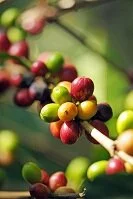Dining Etiquette
Dining with others in Honduras is all about the socialization aspect of the event so be sure to be ready for conversation. Generally, the Hondurans arrive to meals quite late, arriving 30 minutes late is not unusual and some people will show up 45 minutes late.
Once everyone arrives, drinks are usually served prior to eating, something to help prevent a dry throat from all the talking. This generally begins with a toast of "salud" then followed by drinking and lively conversation. Pre-dinner drinks often are in a bar (if eating in a restaurant) or in a living room (if dining in a home). Your host will eventually invite you to the table, but let him or her seat you and expect to be separated from your significant other if eating together; this encourages meeting new people and greater socialization. Generally the men and women will eat on opposite sides of the table and this sexual division continues in other ways as men are expected to stand when women enter the room.
With the arrival of the food, the host will generally invite everyone to begin eating with the words "buen provecho." Although the Hondurans are fairly forgiving in foreign dining habits that differ from their own, they do expect you to keep your hands in sight by resting your wrists on the table and if possible you should eat in the continental style (fork in the left hand and knife in the right). With some foods, you may be expected to eat with your hands, generally when tortillas are involved. If served tortillas, break off enough of each tortilla to take as a single bite so you don't bite off the tortilla; if in doubt, follow the lead of the locals.
If dining in a local's home take small amounts of food at first so you can ask for a second helping; this is a great compliment to your host. As you finish eating, eat all the food from your plate then place the knife and fork together on the right side of the plate.
If dining at a restaurant, summon the server by making eye contact (don't wave or call his/her name). The inviter is expected to pay for everyone present; if you are the guest be sure to offer to pay, an offer that will likely be turned down. If you are paying, look to see if a service charge is included in the bill. If so no additional tip is needed, but if not a tip of up to 10% is appreciated. In more rural areas tips are not expected at this rate, but rounding up is still an appreciated gesture.
Celebrations & Events
Numerous holidays, celebrations, and events have particular foods associated with them in Honduras. Christmas (December 25) is probably the largest festival of the year that is tied to particular foods and perhaps the country's most widely celebrated holiday. This holiday begins on the 24th and is a very holy and family-oriented holiday, which makes experiences the event tough for a foreigner. Christmas Eve dinner usually serves tamales along with dozens of other dishes, including ham, potatoes, and more.
At other events, including birthdays and nearly all large gatherings, the foods are served in large quantities and there's a heavy proportion of meats. There are also plantains, desserts, cake, and candies present at these events, especially birthdays which usually involve a pinata (a paper mache figure filled with candy).
Drinks

Coffee beans
Nearly every popular international beverage is available in Honduras, but the country has few local drinks that are worthy of special note. The favorite drink of the locals a variety of soft drinks and sodas as these are easily accessible everywhere. Coffee, juices, and tea are also readily available.
Among the alcoholic drinks in Honduras, beer is the preferred choice and there are plenty of local beers to choose from, including "Salva" "Vida," "Nacional," "Polar," "Barena," "Port Royal," and "Imperial." Rum is also popular, with the locally distilled "Flora de Cana" leading the industry. For a more unusual taste of Honduras try guaro, a liquor made from sugarcane or giffity (or guifitty), the local firewater. Other common alcoholic beverages, such as wine and liquors are also readily available in stores, restaurants, and bars.
The tap water in Honduras should not be consumed. Be sure to also avoid anything with ice as it may have been made from the tap water. Salads and fruits could have also been washed in the tap water so be careful with those foods as well.